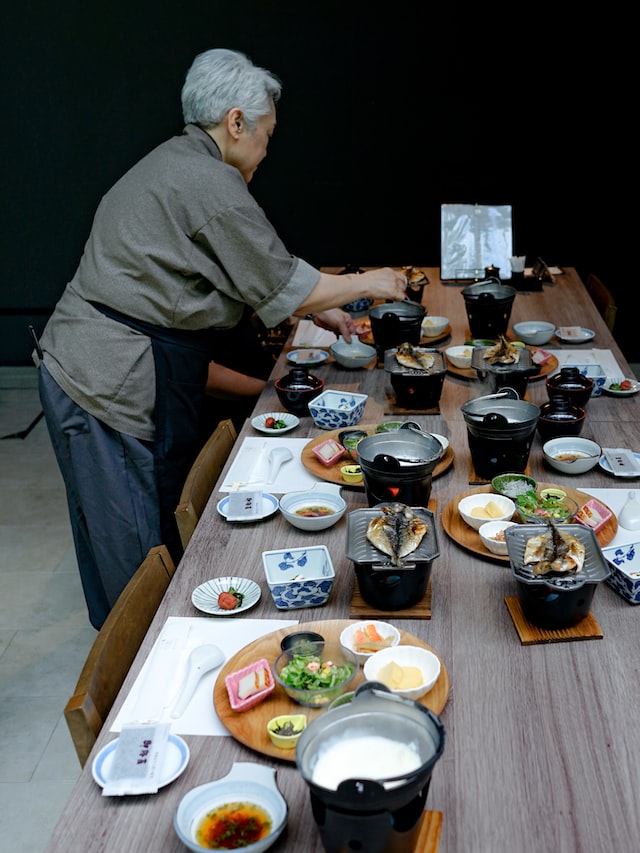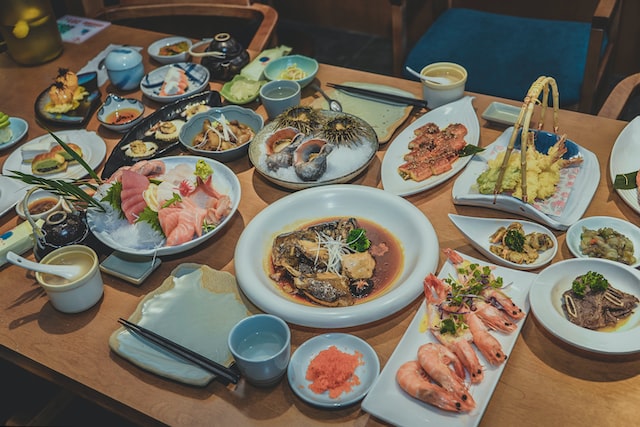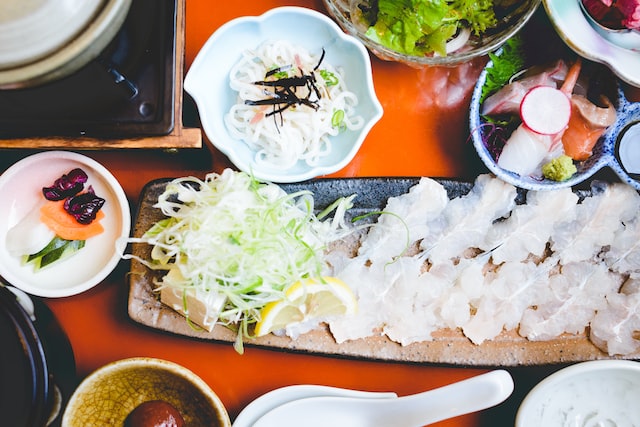In Japanese cuisine, Kaiseki is more than just a meal. It’s an experience that transcends time and space, a journey through the senses that will transport you to a world of beauty, harmony, and exquisite flavors.
The Japanese have been practicing kaiseki for centuries as a way to celebrate the changing seasons and honor the bounty of nature. Kaiseki is a multi-course meal that incorporates fresh, seasonal ingredients, delicate flavors, and careful presentation.
Each kaiseki course is a work of art, designed to delight the senses and awaken the palate. The meal is served in a quiet, intimate setting where the focus is on the food and the experience.

Kaiseki is more than just a culinary tradition. It’s a way of life, a philosophy that embraces mindfulness, gratitude, and reverence for the natural world.
To truly appreciate it, you must surrender yourself to the experience, let go of your expectations, and allow the beauty and magic of the meal to wash over you. In doing so, you will discover a new way of understanding food, a new way of experiencing life, and a new way of being in the world.
So come, let us take you on a journey to discover the wonders of kaiseki. Let us share with you the secrets of this ancient art form, and show you how it can transform your relationship with food, nature, and yourself.
Experience Kaiseki: the Japanese Multi-Course Meal
Kaiseki (懐石) is a traditional multi-course Japanese meal that is typically served in fine dining restaurants and ryokan (traditional Japanese inns). Kaiseki is a culinary art form that emphasizes seasonality, simplicity, and the beauty of nature.

A typical Kaiseki meal includes several small dishes that are presented in a specific order, starting with a sakizuke (an appetizer), followed by several smaller courses, and ending with a shime (a closing dish). Each dish is carefully prepared using fresh, seasonal ingredients and is presented in a way that is pleasing to both the eyes and the palate.
Here is an example of a 9-course Kaiseki meal:
- Sakizuke (Appetizer) – A small dish of seasonal ingredients, such as steamed abalone or grilled eel.
- Hassun (Seasonal Platter) – A platter of small dishes that showcase the season’s freshest ingredients, such as sashimi, tempura, and pickled vegetables.
- Mukozuke (Sashimi) – A dish of raw fish that is sliced and arranged on a bed of ice.
- Takiawase (Vegetable Dish) – A dish that combines seasonal vegetables and seafood or meat, such as simmered bamboo shoots and sea bream.
- Yakimono (Grilled Dish) – A dish of grilled seafood or meat, such as grilled eel or beef.
- Agemono (Deep-fried Dish) – A dish of deep-fried seafood or vegetables, such as tempura.
- Shiizakana (Seasonal Dish) – A dish that is unique to the restaurant and reflects the chef’s creativity and skill.
- Gohan (Rice Dish) – A dish of steamed rice that is often accompanied by pickles and miso soup.
- Mizumono (Dessert) – A light, refreshing dessert that often features fruit or sweetened beans.
Each Kaiseki meal is unique and reflects the creativity and skill of the chef, as well as the seasonal ingredients available at the time. The presentation of each dish is also an important aspect of Kaiseki cuisine, with an emphasis on using beautiful ceramics, lacquerware, and other traditional tableware to enhance the dining experience.
How many courses are in a kaiseki meal?
A traditional Kaiseki meal usually consists of multiple courses, typically nine or more, that are served in a specific order. Each course is small in portion size and is designed to highlight a particular flavor, texture, or seasonal ingredient. The idea is to provide a wide range of flavors and textures that build upon one another to create a satisfying and harmonious dining experience.

It’s worth noting that the exact number of courses in a Kaiseki meal can vary depending on the restaurant or chef, and some Kaiseki meals may include more or fewer courses than the typical nine courses. Additionally, Kaiseki meals may also be customized to accommodate dietary restrictions or preferences.
Overall, Kaiseki is a highly regarded dining experience that showcases the best of Japanese culinary traditions, and it is often considered a true gastronomic art form.

